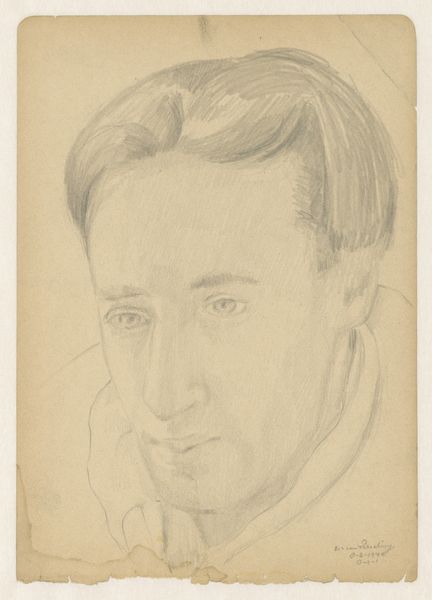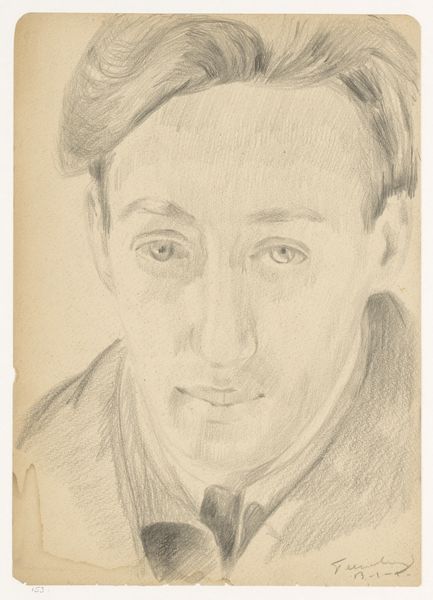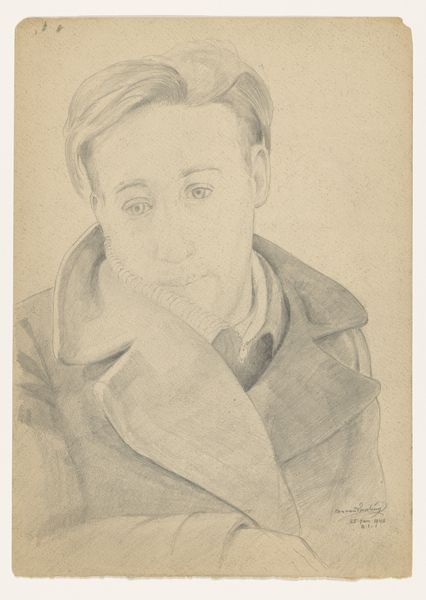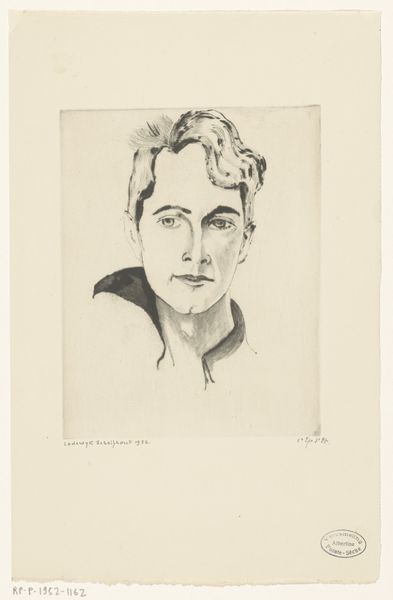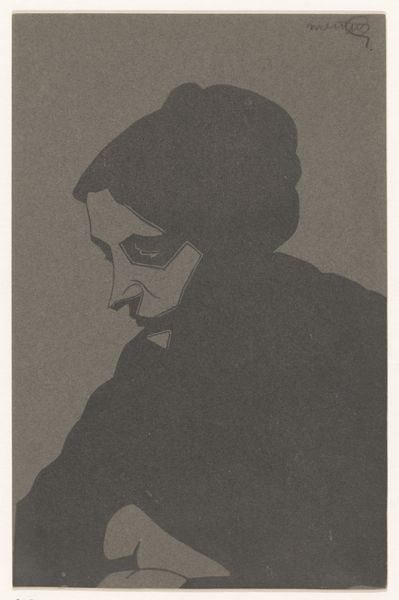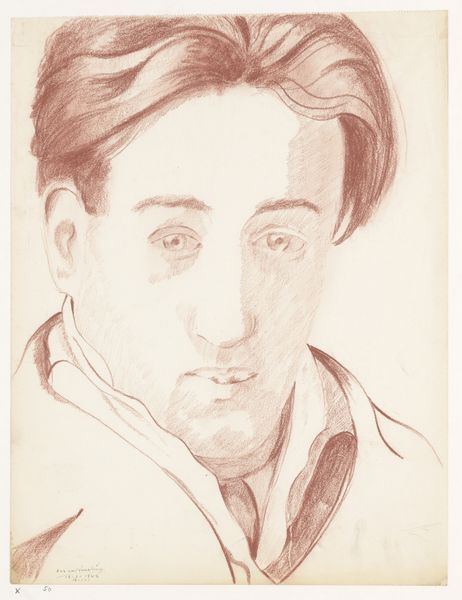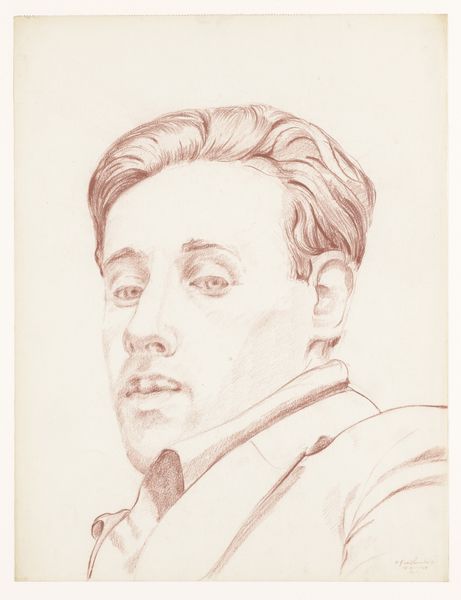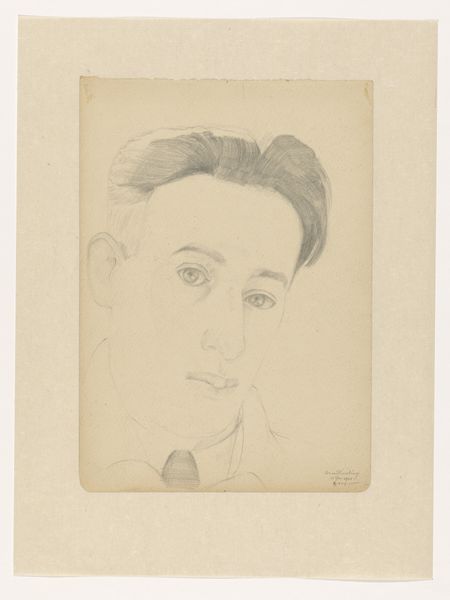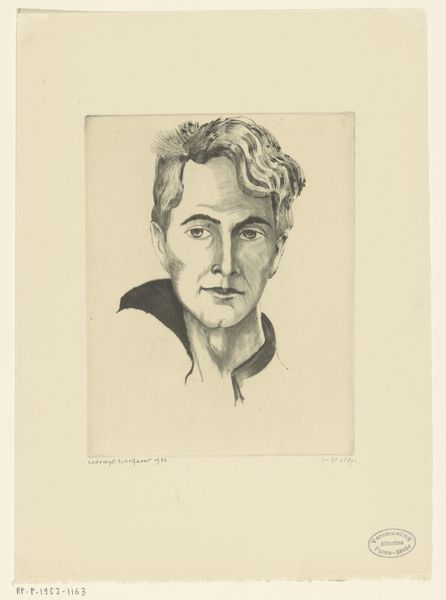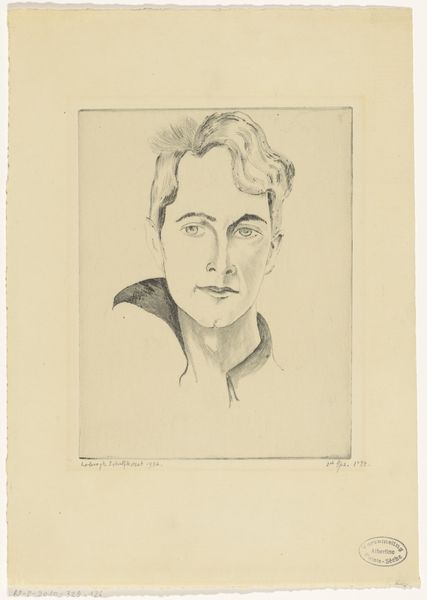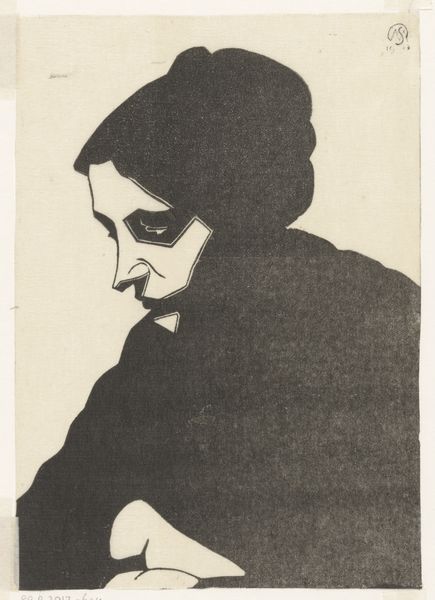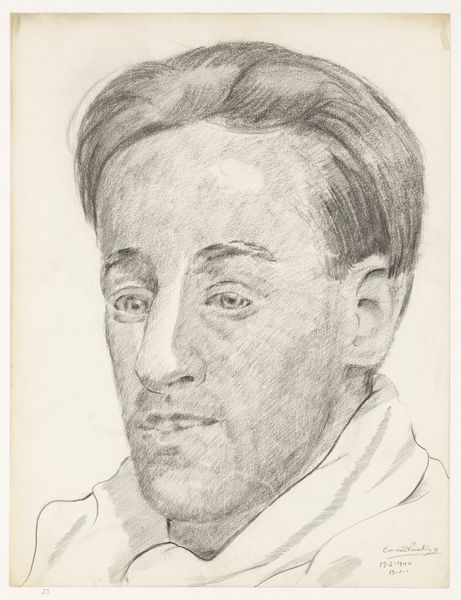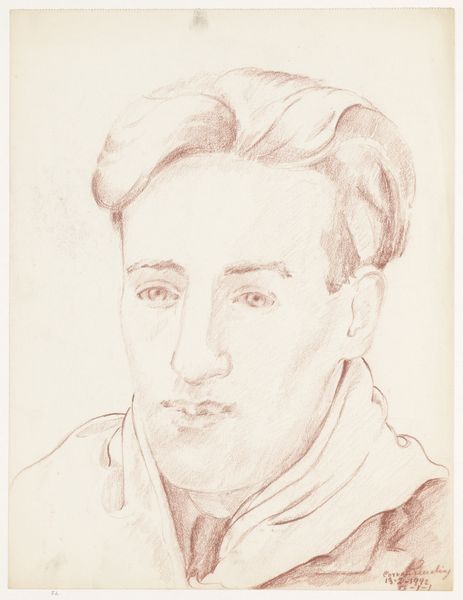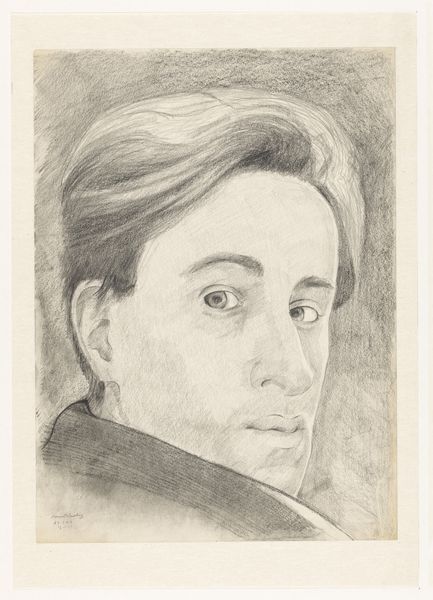
photography, gelatin-silver-print
#
portrait
#
self-portrait
#
pictorialism
#
photography
#
historical photography
#
black and white theme
#
black and white
#
single portrait
#
gelatin-silver-print
#
modernism
Dimensions: sheet (trimmed to image): 18.9 x 24.1 cm (7 7/16 x 9 1/2 in.) mount: 53 x 39.7 cm (20 7/8 x 15 5/8 in.)
Copyright: National Gallery of Art: CC0 1.0
Editor: This is a photograph titled *Georgia O'Keeffe*, taken by Alfred Stieglitz in 1933. It's a gelatin silver print, and the strong contrast gives it such a striking, modern feel. What do you make of this portrait? Curator: I see the gelatin silver print itself as a crucial element here. Its emergence marked a shift in photographic practices. Stieglitz was consciously using a process accessible to many, a democratizing force challenging established portraiture's dependence on painting and its elitist associations. How do you read O'Keeffe’s involvement? Editor: That's fascinating, thinking about the accessibility of the medium! I guess, in the context of Stieglitz's wider work, O’Keeffe being the subject challenges the traditional gender roles of artist and muse... Curator: Precisely. She's not merely an object of beauty. Look at the hand, resting firmly on the car. It hints at labor, control, even a sense of the 'working woman' in a changing social landscape. The automobile too – a potent symbol of modernity, industrial production, and individual freedom in the 1930s. Does her gaze tell us anything? Editor: Yes, her direct gaze… it avoids the passive or submissive pose often associated with women in portraits of the era. It is confident. Curator: It certainly resists easy categorization. And consider the mass production implicit in the gelatin silver process, the car. Then juxtapose that with O'Keeffe’s artistic individuality. Where do we see a resolution of these tensions? Editor: This makes me rethink the idea of a portrait; it’s not just about the individual but also the tools and contexts that shape that image, blurring boundaries between art, industry, and society. Curator: Exactly. And it's through engaging with those materials, those very concrete processes, that we uncover these interwoven layers.
Comments
No comments
Be the first to comment and join the conversation on the ultimate creative platform.
